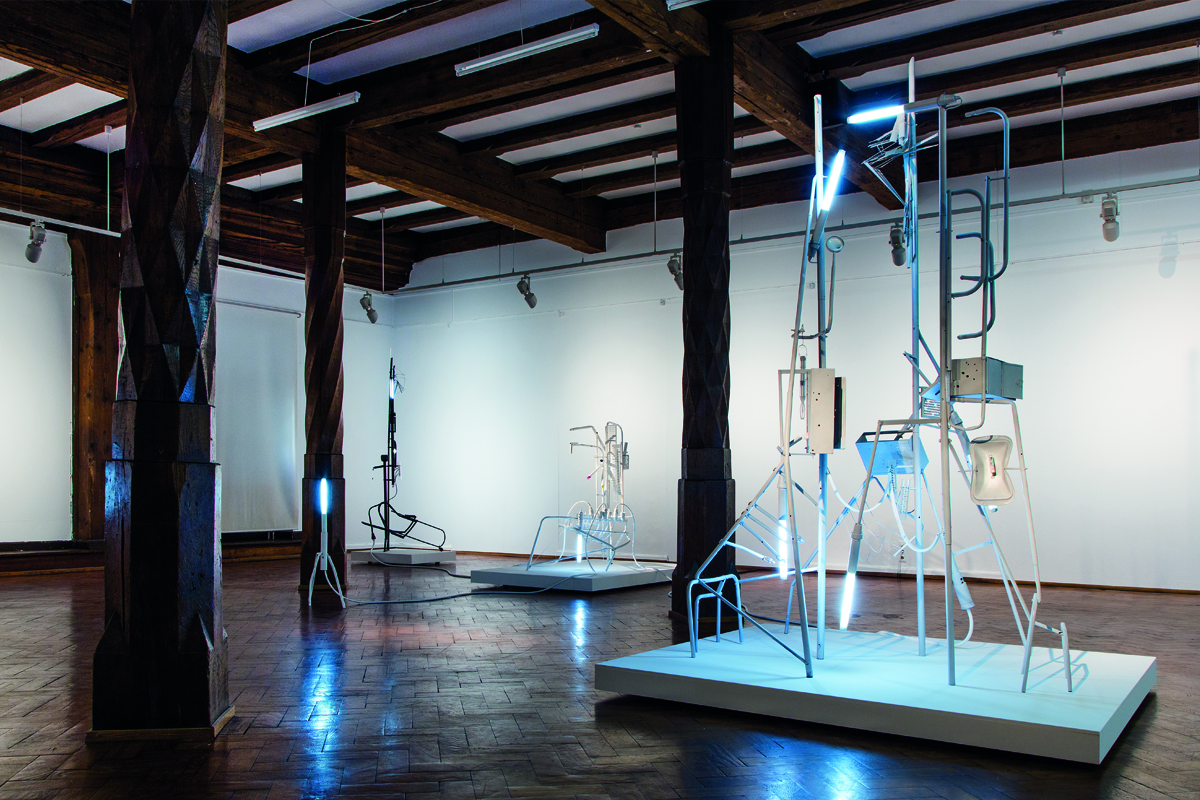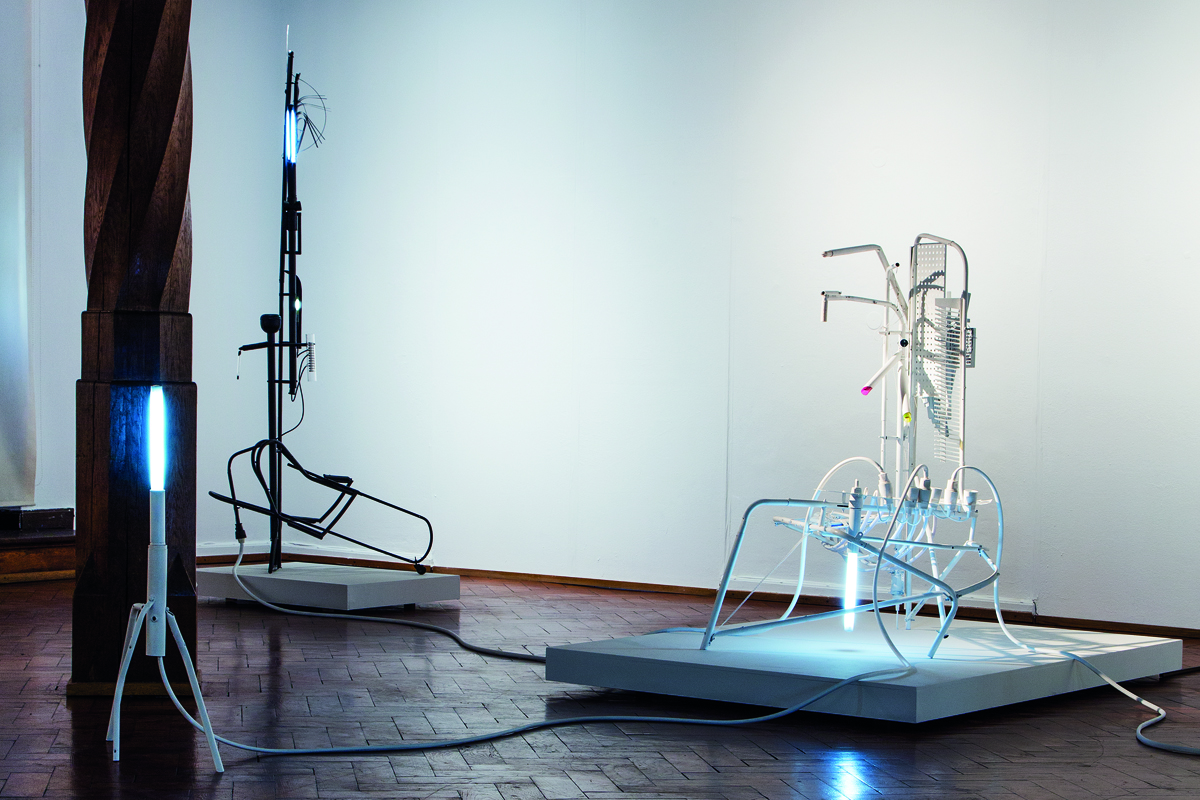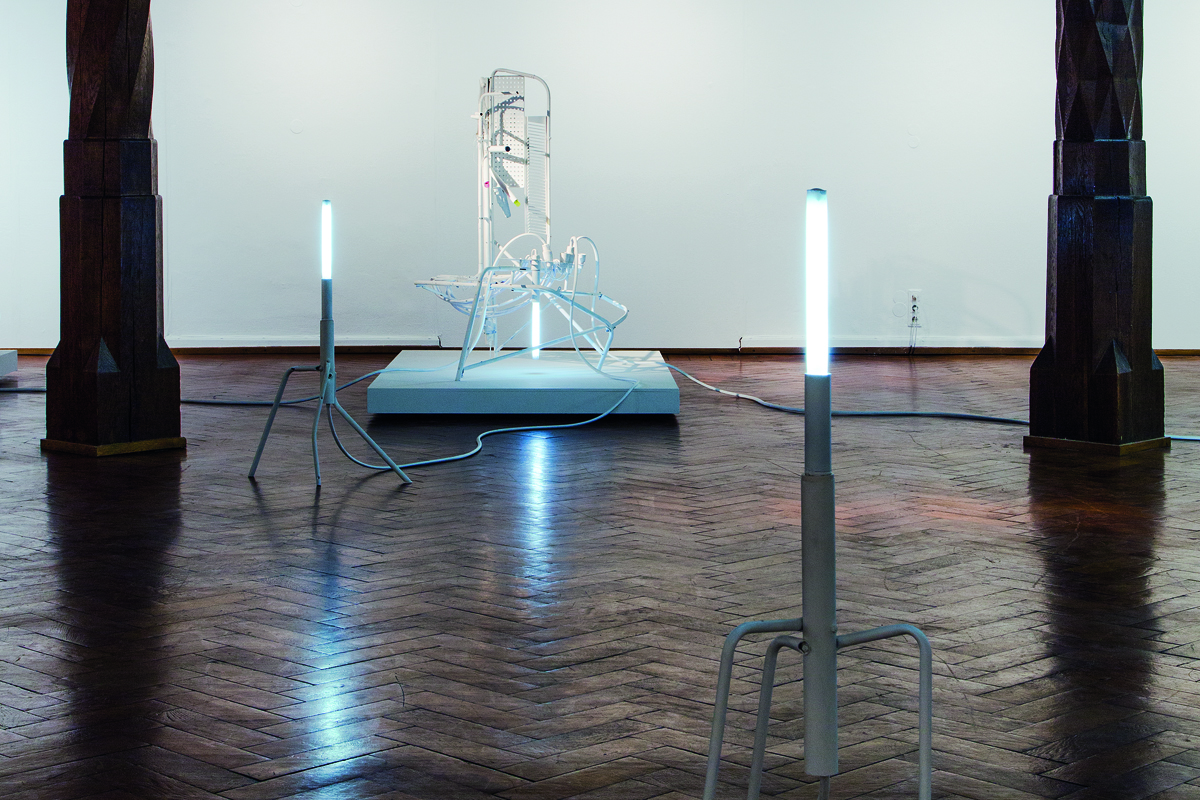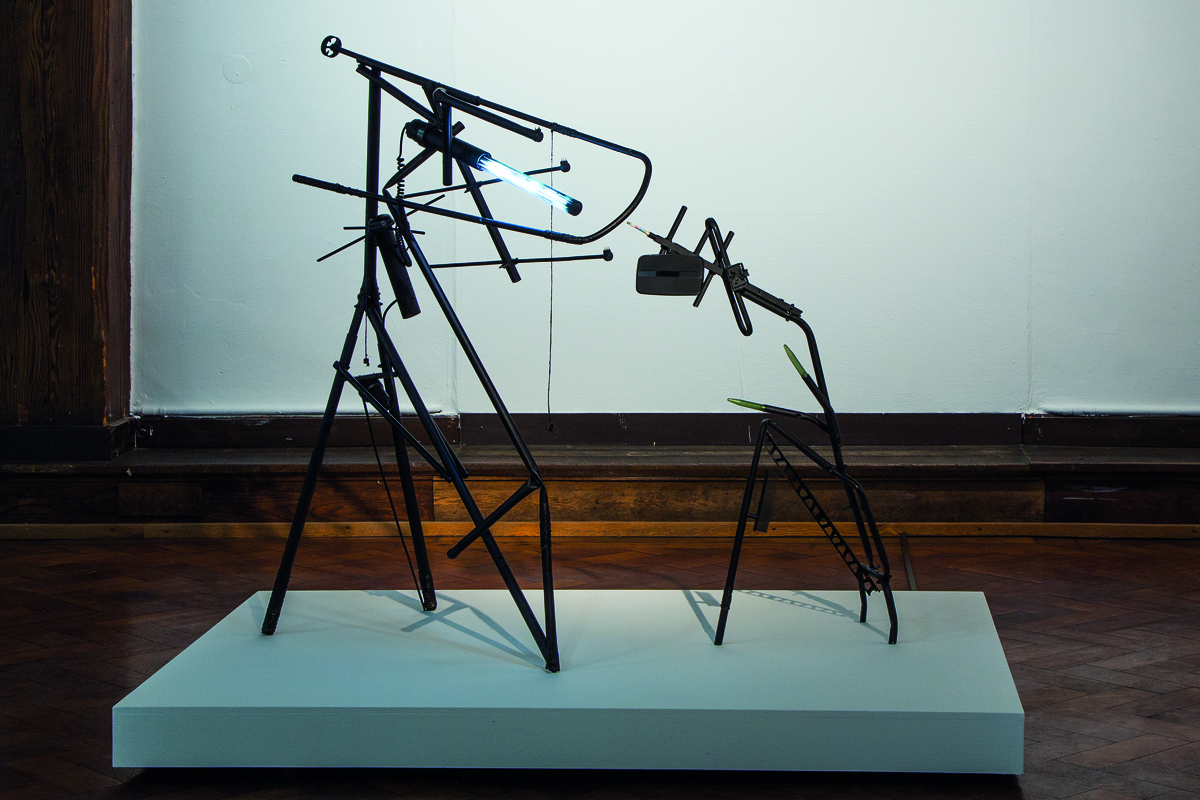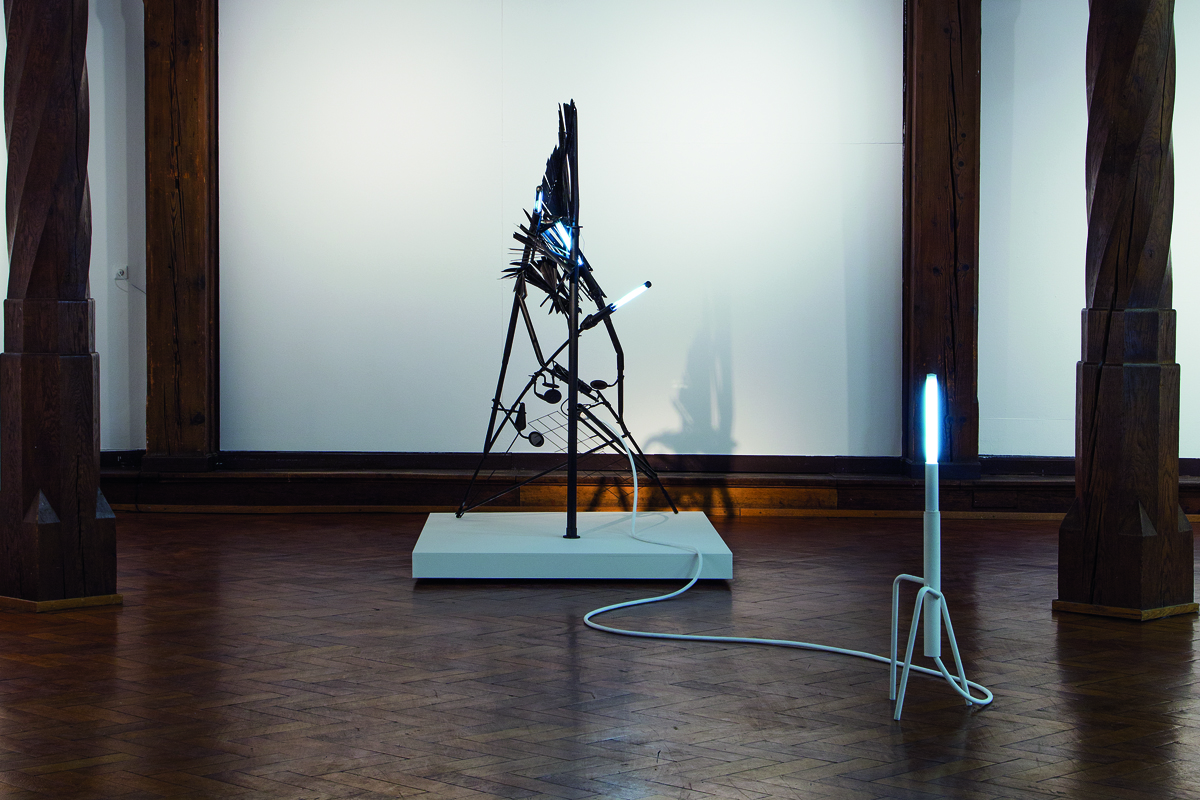Say a body. Where none. Say a place. Where none. For the body. To be in.
September 7 – November 3, 2013
Kunstverein Ulm
An open field
Kunstverein Ulm is back on track after summer break. We are glad to present an exhibition by Berlin-based sculptor Madeleine Boschan. The exhibition will be inaugurated Saturday, September 7, 7 p.m. with speeches by artistic director Monika Machnicki and art historian Christian Malycha.
Do you remember? In Ulm, Madeleine Boschan’s sculptures have already been on view in several group shows. Now she returns for her first institutional solo exhibition with completely new works.
She has created an ensemble of 12 sculptures specifically addressing the architecture, history and function of the Kunstverein’s “shoe-house hall” established in 1537 which, since the Renaissance, has served as ballroom, fencing or dance hall.
The clear geometry of the hall, strictly divided by 12 oaken pillars into 15 individual quadrants, is countered by six flat platforms asymmetrically arranged throughout the room upon which the statues are placed. By means of light and electrical cabling the sculptures create ‘bridges’ spanning the empty space between them and, thus, begin to communicate with each other mutually.
Madeleine Boschan’s sculptures are ambivalent beings. Depending on one’s perspective, depending on how one adjusts the view they are assemblages or accumulations of everyday objects. One catches glimpses of metal racks, cool light from fluorescent neon tubes, cables, plugs, mirrors, slide-rules, thermometers, blinds, all bent or spread … Some things were found (“objet trouvés”), others purposely bought. The artist cancels their former functions and imposes a new order with new tasks upon them. Looking at the sculptural whole, one perceives different figures and shapes rising in front of oneself – tilted here, reaching out there … They are hybrid beings, part animal, human and totem. Interconnectedly, they establish rhizome-like bonds among themselves forming symbiotic relationships as in a swarm or a pack … echoes of behavioural biology are not accidental but intended, just as the obvious references to real-time and real-space evoked by the incorporated technical equipment for counting, time-measuring and the determining local temperatures.
The exhibition’s title stems from one of the last prose works of the Irish writer and Nobel Prize winner Samuel Beckett (“Worstward Ho”). The correlation between Beckett’s and Madeleine Boschan’s work roots in the artistic attitude of transformation, appropriation and recovery which – despite a contrary first impression – balances horror with humour. From Beckett’s text, the artist has derived genuine poetics of space:
‘Space itself’ is empty and incomprehensible. It is for a body to appear within this void to designate it as a place, to grant contour, form, and shape to it. Thus, constituting it as ›surrounding space‹ in the first place. It is for a body present to formulate space, or a body absent allowing the void to open up again.
Madeleine Boschan’s sculptures are baseless , finding their particular positions upon the white platforms distinct from the dark floor of the Kunstverein. Those plateaus seem to float above the floor, emphatically supporting the fragility and airiness of the light-space the sculptures create. Associating the set-up of the exhibition with Gilles Deleuze and Félix Guattari’s “Mille Plateaux” is a matter of course, as the investigation of the conditions of today’s post-industrial societies is an integral part of Madeleine Boschan’s working practice.
Therefore, the experience of space established by her exhibition is an ambivalent one, too. On the one hand, the original oak pillars represent as former trees the system of nature and organic growth, on the other hand, they have undergone a process of transformation. Ornamented with different geometric carvings they have become mere artifacts structuring space and giving measure as well as order to the hall. In turn, Madeleine Boschan deletes this geometry with a new geometry of the plateaus, you could also say that she inscribes her own geography into the hall. The new topology of her sculptures spreads and covers all former geography or measurements. Furthermore, each sculpture individually emits light and energy, thereby, fostering its very own place.
However, their neon light is cold. Cool as the white of the plateaus, cool as the technical metal-skin of the sculptures with their white, black or light gray surfaces. The exhibition space, in contrast, is tinted in warm shades – brown wooden tones and natural light.
Into this drama of cold and heat the beholders are sent by Madeleine Boschan. According to Beckett, she emphasises that spatial experience is first and foremost a physical experience: how does a body gain its halt and stand within the void, how does it find its appropriate place and holds up this position, how does it interact with other bodies? Madeleine Boschan evokes forms, shapes, and figures, where there were none before (Say a body. Where none). She creates spatial constellations and places where there were none before (Say a place. Where none). And she enables the beholders wandering upon this ‘open field’ to experience both the physical and the sensual relations of space and sculpture (For the body. To be in).
